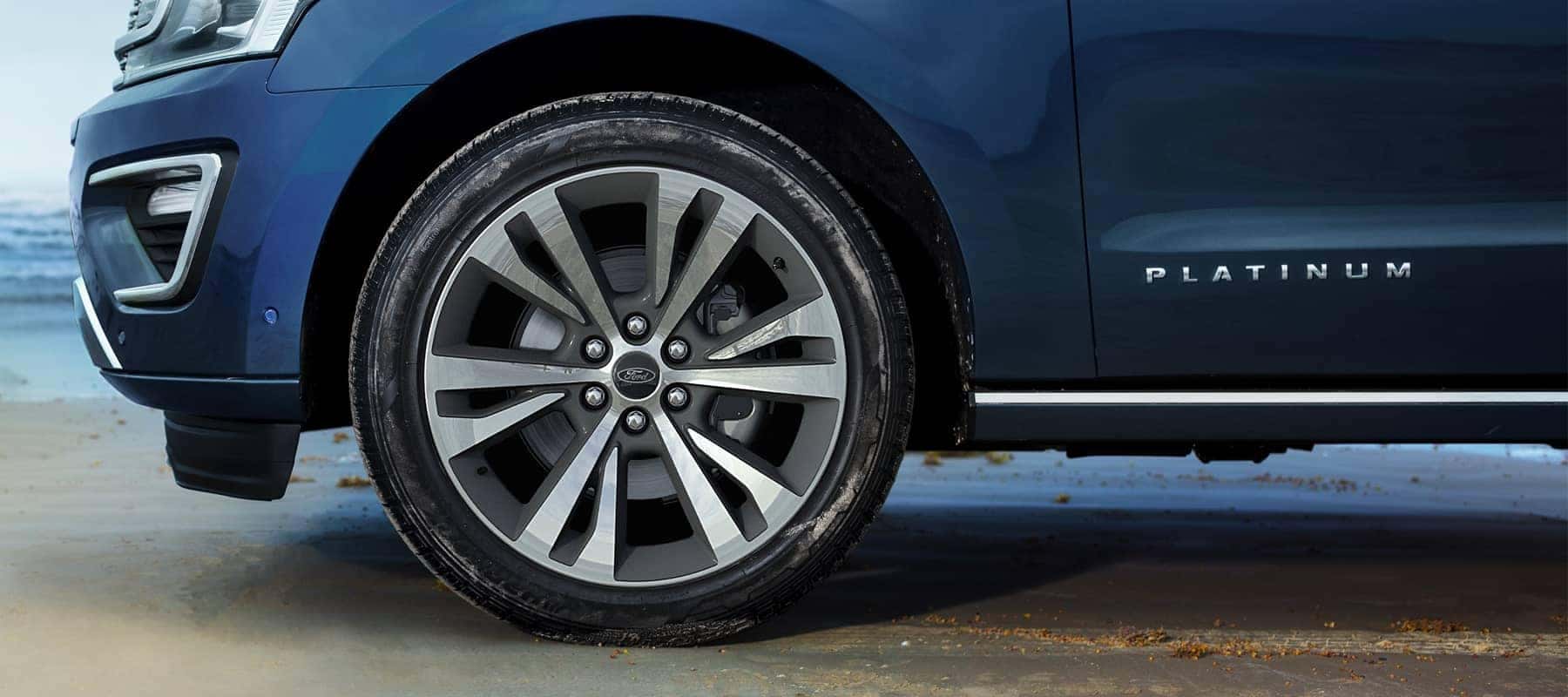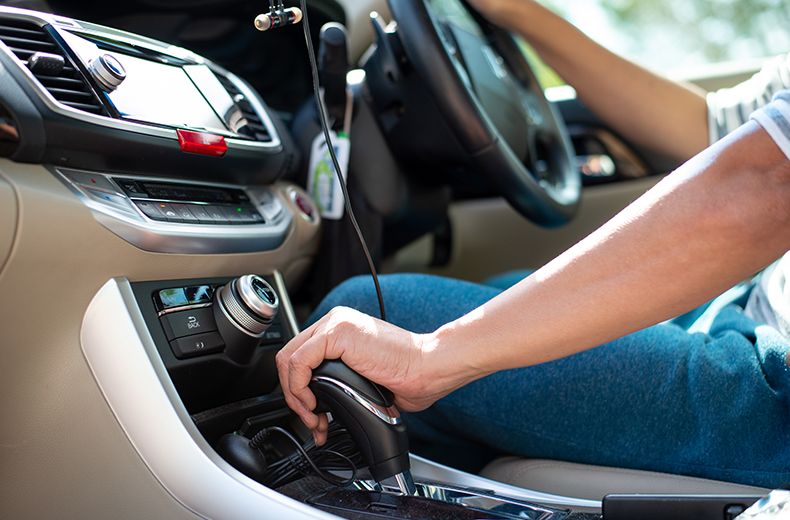When a car bounces up and down, it could be due to worn-out shock absorbers or suspension components. This issue can lead to an uncomfortable ride and affect the car’s handling and safety.
Experiencing a car bouncing up and down can be alarming and frustrating. This problem can arise from various factors, such as worn-out shock absorbers, damaged suspension components, or improper wheel alignment. Not only does it make the ride uncomfortable, but it also affects the vehicle’s handling and safety.
Addressing this issue promptly is crucial to ensure a smooth and safe driving experience. We will explore the common causes of car bouncing and provide insights on how to diagnose and resolve this issue effectively. Understanding the underlying reasons for the bouncing motion can help car owners take the necessary steps to rectify the problem and restore their vehicle’s performance.

Credit: www.nsford.com
Understanding Car Suspension
Components Of A Car Suspension
A car suspension system is made up of several key components that work together to provide a smooth and controlled ride. These components include:
- Springs
- Shock absorbers
- Struts
- Control arms
- Anti-roll bars
Function Of A Car Suspension
The primary function of a car suspension is to ensure a comfortable and stable ride by absorbing the impact of uneven road surfaces and bumps. It serves to maintain contact between the tires and the road, providing steering stability and traction while minimizing body roll during cornering.
Causes Of Car Bouncing
Car bouncing up and down can be caused by various issues within the vehicle’s suspension system. Knowing the underlying reasons for this issue is crucial for maintaining a smooth and safe driving experience. Let’s explore some common causes of car bouncing.
Worn-out Shock Absorbers
The primary function of shock absorbers is to dampen the bouncing motion of the vehicle. When these components become worn-out, they lose their ability to effectively control the movement of the car. As a result, the car may exhibit a bouncy and unstable ride, especially on uneven surfaces.
Damaged Springs
The springs in a car’s suspension system play a critical role in supporting the weight of the vehicle and absorbing road shocks. If the springs are damaged or worn, they can lead to excessive bouncing as they struggle to maintain proper vehicle height and stability.
Uneven Tire Pressure
Tire pressure imbalances can also contribute to car bouncing. When one or more tires have significantly different pressure levels than the others, it can lead to an uneven and jarring ride, causing the car to bounce up and down unpredictably.
Symptoms Of Car Bouncing
When your car starts bouncing up and down, it can be a cause for concern. It not only disrupts your driving experience but can also indicate underlying issues that need attention. Identifying the symptoms of car bouncing is important to ensure the proper functioning and safety of your vehicle.
Excessive Body Movement
One of the key symptoms of car bouncing is excessive body movement. Your car may exhibit a noticeable up and down motion, especially when driving over bumps or uneven surfaces. This bouncing sensation can be felt by both the driver and passengers, making the ride uncomfortable and less smooth.
Unstable Steering
Another symptom of car bouncing is unstable steering. You may notice that the steering wheel feels loose or requires constant adjustments to maintain control of the vehicle. This instability can make it difficult to navigate turns or keep the car on a straight path, posing a safety risk on the road.
Uneven Tire Wear
Additionally, car bouncing can lead to uneven tire wear. The excessive body movement and unstable steering can cause uneven distribution of weight on the tires, resulting in uneven tire wear patterns. This can be seen as bald spots or uneven tread on the tires, which not only compromises your vehicle’s handling but also reduces tire lifespan.
To ensure a smooth and safe driving experience, it’s important to address these symptoms of car bouncing promptly. Consulting with a professional mechanic can help identify the root cause and determine the necessary repairs or adjustments needed to restore your vehicle’s stability and performance.
Effects Of Car Bouncing On Vehicle
Car bouncing up and down can have various effects on the vehicle. These effects can range from reduced stability and control to increased wear and tear on other parts. It is important to understand these effects in order to address and resolve any issues that may arise from car bouncing.
Reduced Stability And Control
One of the main effects of car bouncing is reduced stability and control. When a car bounces excessively, especially during driving, it becomes difficult for the driver to maintain proper control over the vehicle. The bouncing motion can cause the wheels to lose contact with the road surface, leading to a loss of traction.
This loss of traction can be particularly dangerous in certain driving conditions such as wet or slippery roads, where maintaining a solid grip on the road is crucial. Reduced stability and control can compromise the safety of the vehicle and its occupants.
Increased Wear And Tear On Other Parts
An often overlooked effect of car bouncing is the increased wear and tear on other parts of the vehicle. When a car bounces excessively, it puts additional stress on various components, including the suspension system, tires, and even the frame of the vehicle.
This increased stress can lead to premature deterioration of these parts, resulting in a shorter lifespan and the need for more frequent repairs or replacements. For example, constant bouncing can cause the suspension system to wear out faster than usual, leading to a less comfortable ride and potentially compromising the overall integrity of the vehicle.
Additionally, excessive bouncing can also impact other parts indirectly. For example, when the tires lose contact with the road surface due to bouncing, it can result in irregular tire wear. This can lead to uneven tire tread and compromised traction, further amplifying the effects of reduced stability and control.
Overall, the effects of car bouncing on a vehicle can be significant and should not be taken lightly. It is essential to address any bouncing issues promptly to ensure the safety, performance, and longevity of your vehicle.
How To Identify The Problem
Car bouncing up and down can be frustrating and dangerous, but identifying the problem early is crucial for a smooth driving experience. In this section, we will discuss how to visually inspect your vehicle and perform a road test to pinpoint the root cause of the bouncing issue.
Visual Inspection
A visual inspection is the first step in identifying the problem. By visually examining your car, you can often identify obvious issues that may be causing the bouncing motion. Here are some key areas to look out for:
- Suspension Components: Check for any signs of damage or wear on the shock absorbers, struts, and springs.
- Tires: Inspect the tires for uneven wear, bulges, or other forms of damage that may affect the car’s stability.
- Wheel Alignment: Misaligned wheels can cause bouncing, so check if the wheels are aligned correctly.
- Undercarriage: Look for any visible damage to the undercarriage, including bent or broken parts that may contribute to the bouncing motion.
If you notice any issues during the visual inspection, it is recommended to take your car to a professional mechanic for further assessment and repairs. Remember, addressing the problem early can prevent more significant damage and potential accidents down the road.
Road Test
A road test is an essential step in diagnosing the bouncing problem and understanding how it affects the vehicle’s performance. During the road test, keep the following points in mind:
- Notice the Bouncing: Pay attention to when and where the bouncing occurs. Is it experienced at specific speeds or when going over bumps?
- Handling: Observe how the car handles during the bouncing motion. Does it feel unstable or difficult to control?
- Noise: Listen for any unusual noises that accompany the bouncing, such as clunking or squeaking sounds.
- Steering: Assess if the bouncing affects the car’s steering ability. Does the steering become harder or looser?
By taking note of these factors during the road test, you can provide valuable information to your mechanic, enabling them to diagnose and remedy the underlying issue more efficiently.
:max_bytes(150000):strip_icc()/can-checking-account-go-negative.asp-final-1e2da6e358ab4ec2bbaa30e2e54c49ec.png)
Credit: www.investopedia.com
Steps To Fix Car Bouncing
If you notice that your car is bouncing up and down while driving, it’s important to address the issue promptly. Ignoring the problem can lead to further damage and compromise your safety on the road. Fortunately, there are several steps you can take to fix car bouncing.
Replacing Shock Absorbers
Shock absorbers play a crucial role in providing a smooth and stable ride. Over time, they can wear out and lose their effectiveness, resulting in car bouncing. To address this issue:
- First, lift your car using a jack to ensure it is safely supported.
- Remove the old shock absorbers by loosening the mounting bolts with a wrench.
- Install the new shock absorbers by evenly tightening the mounting bolts.
- Lower the car and test the suspension to ensure the bouncing is resolved.
Repairing Or Replacing Springs
Faulty springs can also cause a car to bounce excessively. To fix this issue:
- Start by lifting your car and placing it on jack stands for safety.
- Inspect the springs for any signs of damage or wear, such as cracks or breaks.
- If the springs are damaged beyond repair, replace them with new ones.
- If they can be repaired, consult a professional to ensure proper fixing.
- Lower the car and test the suspension to check for any remaining bouncing.
Checking And Adjusting Tire Pressure
Incorrect tire pressure can contribute to car bouncing. To address this issue:
- Start by checking the recommended tire pressure for your car. This information can usually be found in the owner’s manual or on a sticker inside the driver’s door frame.
- Using a tire pressure gauge, check the pressure in each tire. If any tire is under or overinflated, adjust the pressure accordingly.
- Ensure that all tires are inflated to the recommended pressure.
- Regularly monitor and adjust the tire pressure to maintain optimal performance.
Benefits Of Fixing Car Bouncing
Fixing car bouncing can significantly improve driving comfort and safety. Addressing this issue can help extend the lifespan of your vehicle’s suspension components and ensure better handling and stability on the road. Plus, it can prevent further damage to the car’s chassis and other related parts.
Benefits of Fixing Car Bouncing Are you experiencing the frustration of your car bouncing up and down? It’s essential to address this issue promptly to ensure a smooth and safe driving experience. Fixing car bouncing offers numerous benefits, including improved ride comfort, enhanced safety, and a longer lifespan of suspension components.Improved Ride Comfort
When your car bounces excessively, it can lead to a jarring and uncomfortable driving experience. By resolving this issue, you can enjoy a smoother and more pleasant ride. Fixing car bouncing results in improved suspension performance, effectively minimizing the impact of road imperfections and bumps, and ensuring a more enjoyable drive for you and your passengers.Enhanced Safety
Unresolved car bouncing can compromise the safety of your vehicle. Excessive bouncing affects the stability and handling of your car, increasing the risk of losing control. By addressing this issue, you can ensure optimal vehicle stability, reducing the likelihood of accidents and improving overall road safety.Longer Lifespan Of Suspension Components
Continued bouncing puts excessive strain on your suspension system, leading to premature wear and tear of crucial components. By fixing car bouncing, you can extend the lifespan of your suspension parts. This not only promotes smoother vehicle operation but also helps avoid costly repairs and replacements in the future. In conclusion, addressing car bouncing not only provides immediate comfort and safety benefits but also contributes to the long-term health and performance of your vehicle. By taking proactive steps to resolve this issue, you can ensure a smoother, safer, and more enjoyable driving experience while minimizing the risk of premature wear on your suspension components..jpeg)
Credit: tristarauto.net
Frequently Asked Questions For Car Bouncing Up And Down
Why Does My Car Bounce Up And Down?
Car bouncing up and down can be caused by worn-out shock absorbers or suspension components. These parts help absorb the impact from bumps on the road, but when they are worn, they can no longer effectively prevent the car from bouncing.
It is important to have these components checked and replaced if needed, as it can affect your vehicle’s handling and safety.
How Can I Fix A Car That Bounces Excessively?
To fix a car that bounces excessively, start by inspecting the shock absorbers and suspension components for any signs of wear or damage. If necessary, replace these components with new ones. Additionally, ensure that your tires are properly inflated and that your wheels are properly aligned.
If the issue persists, it is recommended to have a professional mechanic diagnose and resolve the problem.
Can Tire Pressure Affect The Bouncing Of My Car?
Yes, tire pressure can affect the bouncing of your car. If your tires are overinflated, they can become stiff and less able to absorb the impact from bumps, causing the car to bounce more. On the other hand, if your tires are underinflated, they can compress too much, also resulting in excessive bouncing.
It is crucial to regularly check and maintain the correct tire pressure to minimize this issue.
Conclusion
Experiencing car bouncing up and down can be an unnerving and potentially dangerous issue. It is crucial to identify the underlying cause, such as worn-out shocks or suspension components, and address it promptly to ensure optimal safety on the road.
Regular maintenance and inspections are key in preventing car bounce and maintaining a smooth and comfortable ride. Trusting professional mechanics to diagnose and fix the problem can provide peace of mind and extend the lifespan of your vehicle.

